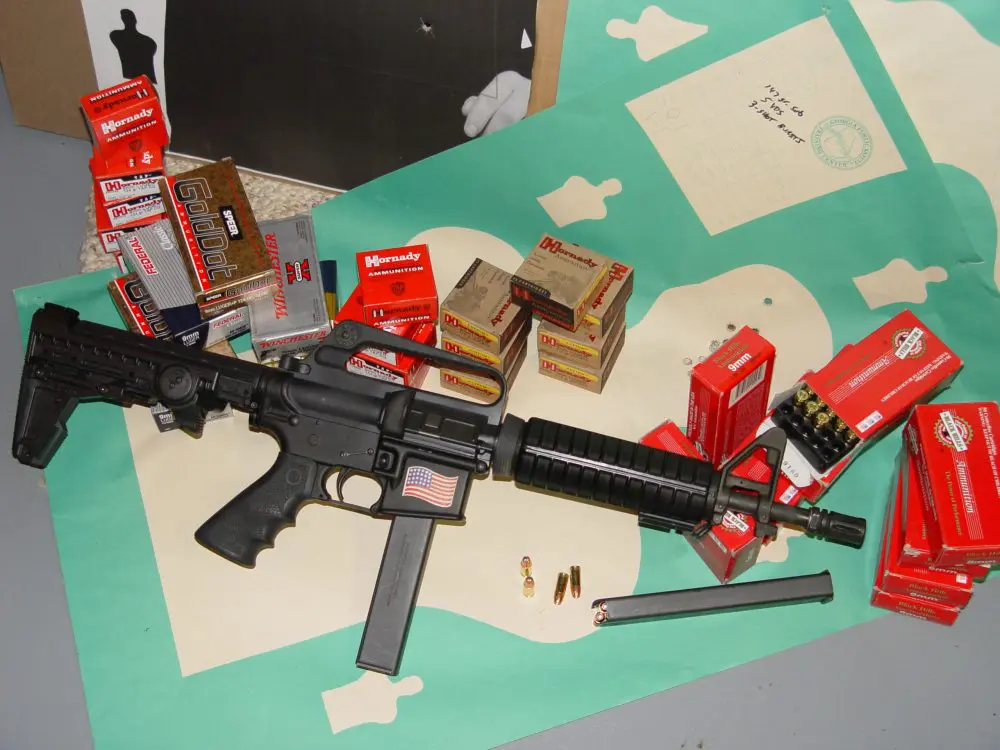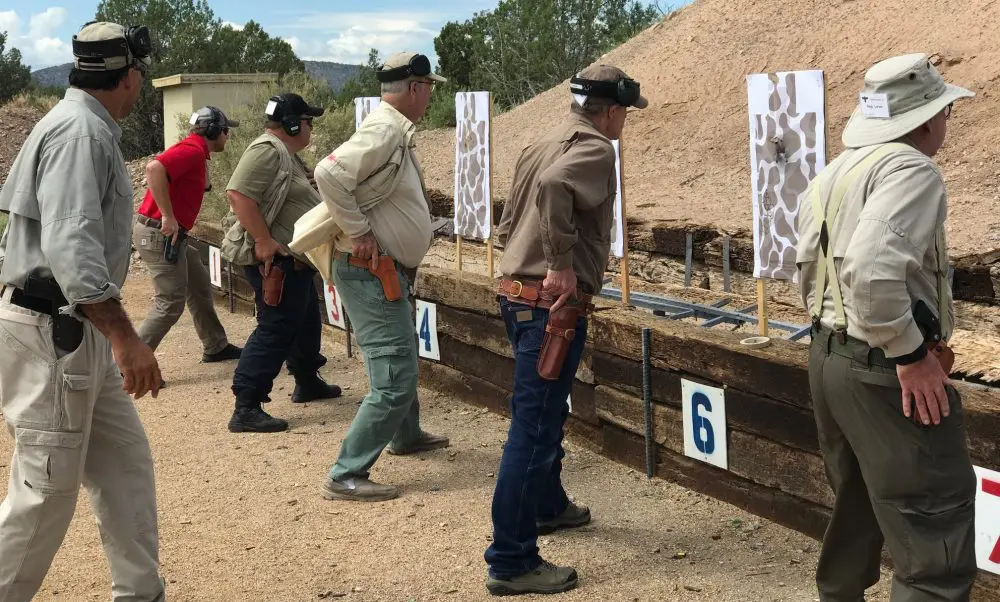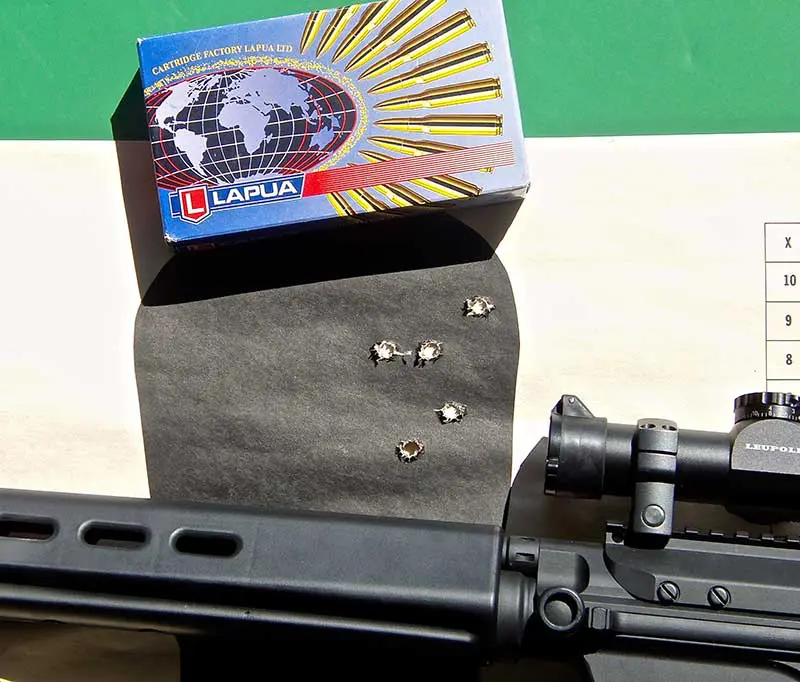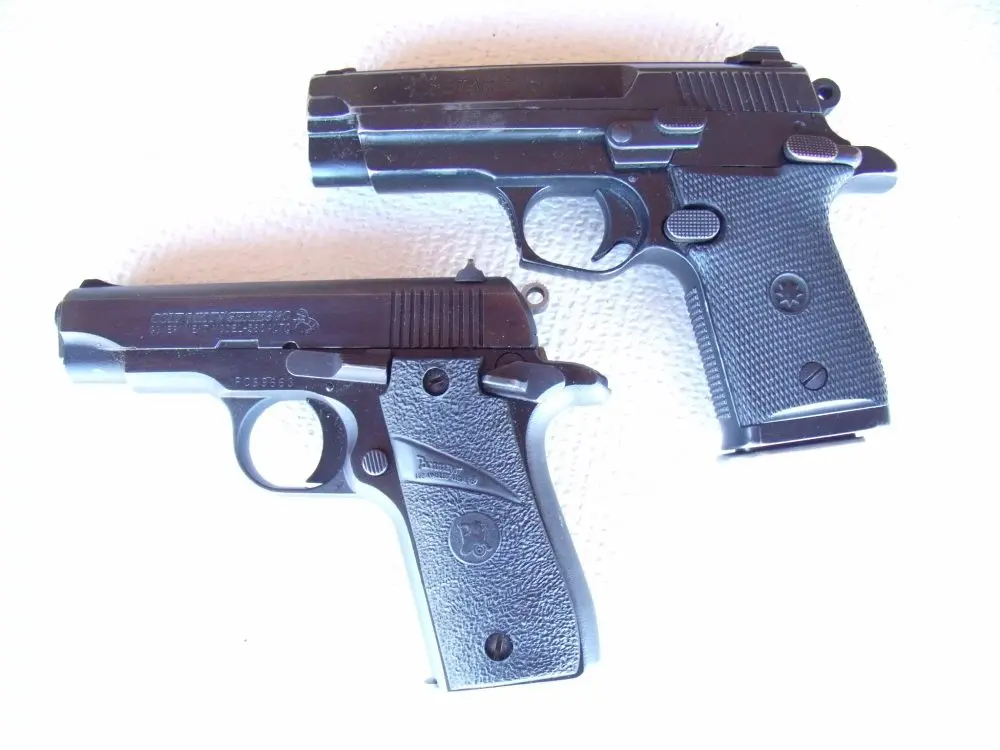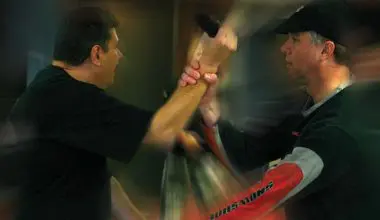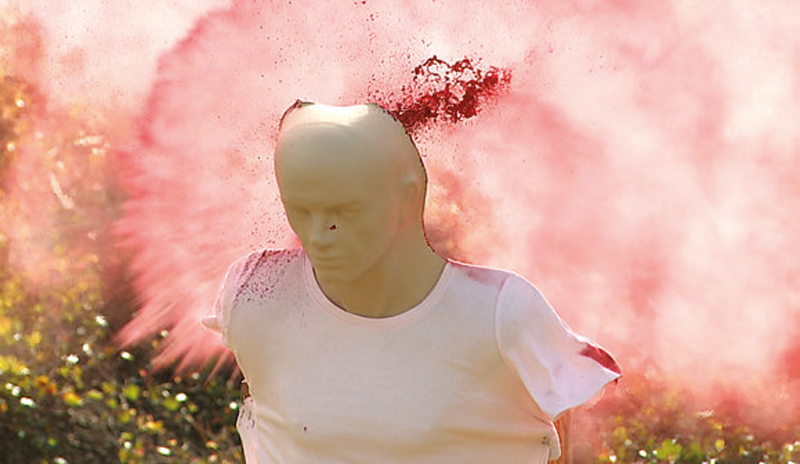
For many years, the way we delivered projectiles into our opponents was clouded with mythology and lies perpetuated by the dream weavers and unknowing instructors who merely parroted what had been passed on to them by others—who likewise lacked a clue.
These myths were enhanced by the bureaucratic indifference and institutional inertia present in any organization, and were most often manifested in the “This is the way we have always done it” attitude in response to anyone questioning their Tactics, Techniques, Procedures, or equipment.
The stupidity covered such gems as “One shot, one kill,” “You only need a high-cap magazine if you intend to miss a lot,” “All fall to hardball,” and the ever popular ““I only carry pistols whose caliber starts with 4.”
We all got/get suckered into the stupidity, myself included. After all, it was what the old-time gun writers said, so it had to be true.
We know better now, and we probably did then as well, but we never asked enough questions.
Table of Contents
WHERE TO SHOOT
Where we put those rounds will be the result of what is available. On a square range, the target is two-dimensional and facing you, so life is pretty easy.
But in the real world, you need to be able to shoot what is available, right now.
In times gone by, this was called center mass. To a certain extent, the center of what is available is the way to go. If you miss the designated aiming point (something likely when all hands are moving), you have a little wiggle room to get a better-than-nothing hit.
Unfortunately, this took a major dump in both the mil and cop sides of the house. Qualification courses overtook training as a priority, but they are not the same thing. If training existed, it did so as lecture/dry practice prior to the qual, and remedial shooting after one failed.
This is of course nothing new, but it has become solidified in a way that should never have been permitted.
Additional problems occur with cops, who are traditional and likely hidebound by nature and have standards that fluctuate wildly according to region, size and political interference, plus the biggest limiter of all, affirmative action.
How we send that love downrange is worth looking at. We know that there is nothing that can be held in two hands that will guarantee someone will be incapacitated with a single shot 100% of the time. A fact of tactical life is that even multiple shots may not give you that instant incapacitation so loved by the movies.
At the city morgue, I have seen many people turned into canoes from ingesting .22, .25, .32, .380s and the like, and have seen several people take near-contact wounds to the body and head from .38, 9×19 and .45 and survive. Therefore I am convinced that, of those variables involved in a pistol fight—type of gun, bullet configuration, weight and caliber—all are a distant tie for second when compared to technique and mindset.
The projectiles need to go where they will make the guy leak the quickest. Your goal is to depressurize the circulatory system—let air in, let fluid out. Bonus points for any other disruptions, but don’t count on them.
While long guns come with enhanced capabilities, proper shot placement/technique is also required.
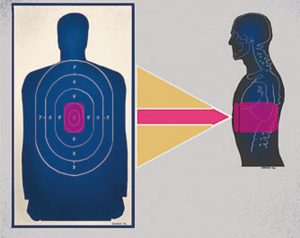
CENTER MASS
Let’s look at center mass for a start. In the day (and for some, that may include today), many qual targets had the X-ring at the navel, with concentric rings radiating outboard. The concentric rings had a decreasing score value. These targets were apparently designed by and for the bullseye community and did not represent human anatomy well at all.
The center of these targets—the navel—represented the approximate center of a human, measuring from the feet to the top of the head.
This is valid in the infantry fight, where any hit is viable because there are likely a lot of bad guys moving around launching bullets at you.
But for CQB, which by definition requires a higher standard of shooting, center mass is actually the approximate center from the hips to the top of the head, and the aiming point is the high chest—right between the nipples.
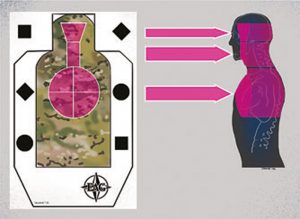
Getting shots where they can most rapidly disrupt the circulatory system is our goal, and the B-27 type targets give false feedback.
Besides having the X-ring way too low, they also reward poor shots and ignore good shots by virtue of the concentric scoring rings.
For punching paper, they make sense—high points for center shots, lower values for those moving away from the center.
However, when punching people, those shots farther away from the belly button upward are of higher value in incapacitating those trying to incapacitate you.
And to give a lower value to high chest/neck shots and no friggin’ value to a head shot is counterproductive—but does make it easier to score, and thus easier to look at the qualification scores for the Keepers of Statistics.
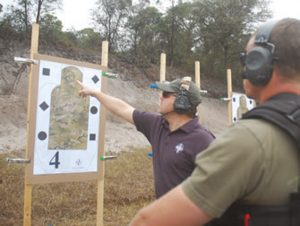
TARGETS
Other targets do not use a bullseye-type scoring ring. The famous “Thug” target formerly used by NYPD (and still used by others) has a humanoid drawing of a man in the once popular Combat Crouch, point shoulder shooting his revolver at you while his support-side arm is diagonally across his chest. This is so that if his opponent shoots him in the chest, the bullets will hit his arm and not his heart.
At least that is what they told me when I went through the academy years ago.
There are several versions of this target in use, but all have a large scoring area running from the hairline down to the abdomen (or to the crotch in some targets). This generous scoring area allows for even poorly trained shooters to qualify, keeping those statistics up.
Bowling pin type targets provide a more realistic shape for the kill zone, but like other qual targets are too generous in size.
The logistical problems associated with police qualifications are many, and include budgetary considerations, staffing, dedicated and qualified range staff, political correctness, and the ever-present bureaucracy. Other priorities will also usurp training, leaving most cops minimally trained.
Getting shots into the bad guy is a good thing. Getting them in the right place—high chest, neck or head—is a lot better.
HOW MANY SHOTS?
The next question should be, “How many times do we shoot someone?” The “A” answer is, of course, until he stops being a threat to you or a third person.
That is what is taught at police academies and other training venues all across the country, and it is pretty good advice. We shoot to stop someone. Stopping them generally means making them incapable of further aggression.
But how do we do that? For years, the common thought was that a single shot was sufficient. That was always nonsense, as the human body is fairly resilient and even good hits may not give immediate results. The majority of shootings require more than a single round to end the fight. At some point, some finally got it. The big push that followed was that firing a pair would increase your chances of a hit by 100%.
There is no doubt that firing a pair is better than firing a single shot at your opponent, but someplace along the line it became doctrine, and that pair has become the be-all, end-all for a great many.
Some go so far as to suggest that you fire only a pair and then pause to evaluate the effectiveness of those two shots.
There is a flaw in this thought process, in that you are already on the back end of the power curve, and any pause you take against a living, breathing person who is trying to hurt you may mean your demise.
FAILURE DRILL
The Failure Drill—a pair to the body followed by a single shot to the brain—sounds good in theory and in fact has a lot going for it, if you can get your opponent to stand still long enough to take the shots.
Shots to the brain may be immediately effective, and shots to the head that do not penetrate the brain may also incapacitate someone, but cannot be counted on to do it every time.
As originally described, there was a slight pause between the body and brain shots while you evaluated your handiwork. You do not have the luxury of time. The presence of his head in front of you means that you need to continue to shoot. But the Failure Drill is still a viable method of engaging someone when center mass hits are ineffective.
NON-STANDARD RESPONSE
A more realistic method of engaging a threat is to fire a Non-Standard Response (NSR). An NSR may be described as firing more shots than a standard response (a pair).
The exact number of rounds that you discharge at your opponent will be determined by the bad guy, but as long as he is a threat, you need to keep shooting.
For our purposes while training, we use seven rounds, because this maximizes the training value as we educate both the mind and the trigger finger. You can ratchet it up or down as necessary. Remember that once your opponent is incapable of fighting, you need to stop shooting.
SQUARE RANGE LIMITATIONS
Doing 100% of your shooting on a square range can be a limiter. Downsides include:
- The targets are almost always in front of you.
- They are almost always on the same plane.
- They don’t react to hits.
- You train to shoot only what you are told to shoot. No matter where you hit, you only shoot the drill.
- No matter how well or badly you shoot, you only shoot what you are told to shoot.
Because of this, the oh-so-important follow through is marginalized.
An added negative is that those stationary qual targets have a very generous scoring area, which will increase the scores of those who receive minimum training.
Under stress—real stress, as in on the two-way range, not the self-inflicted stress of a qualification or competition—your hits will be less than on the square range.
What you can do?
SOLUTIONS
Seek outside training. There are a lot of very good people training folks up. Take advantage of it.
Seek out force-on-force and live-fire shoot house training using reactive targets. They are both needed to round out your training.
While on the range, vary the number of shots delivered to the target. Don’t get locked into the “two shots and holster” mindset.
Develop a good combat mindset.
You attain proficiency by receiving good initial training and reinforcing it with solid sustainment training. Repetition under supervision will enhance your skill sets.
And finally, there is no such thing as muscle memory. There is only memory. Keep your head in the fight.
